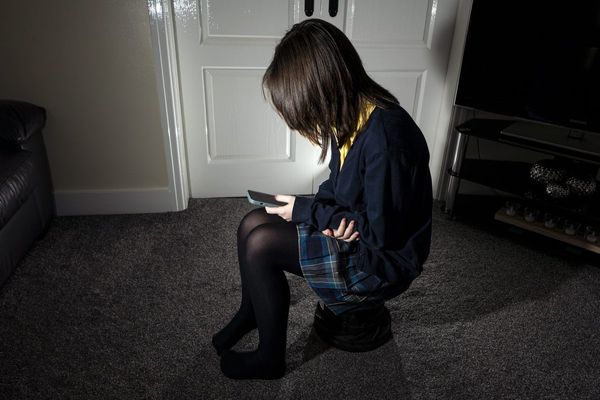
Take a moment to imagine yourself in a room where it’s hard to see the floor because the space is so cluttered. It’s not immediately clear what the purpose of the room is – there’s a desk in one corner, a sofa in the other, and sandwiched in between is an exercise bike. The walls are painted an oppressive shade of brown, and very little light comes in through the windows so the space is illuminated mainly by a bare bulb giving out a blue-ish glow.
This doesn’t feel like somewhere you’d want to spend time, and if the very thought of it is making you feel uneasy, uncomfortable or even stressed, you’re far from alone. There’s increasing evidence that the environments we spend time in can have a huge impact on our emotional wellbeing.
One company that has spent many years looking at people’s thoughts and feelings about how they live is IKEA. It publishes an annual report based on thousands of responses from people worldwide, and the latest, IKEA’s Life at Home report 2021, confirms the intimate connection between how we feel about our homes and how we feel about ourselves – 40% of people who took part said their mental health improved when they felt positive about their homes.
But our homes don’t just affect our wellbeing, they have an impact on our relationships too. An earlier IKEA report, from 2017, found that 40% of people said they lived with things they hated but couldn’t throw away because they belonged to someone else … but about 40% of those surveyed said they had thrown away something that belonged to someone they lived with, without telling them.
Over the past two years, our relationship with our homes has been more important than ever. We’ve needed them to feel welcoming and comforting, our sanctuaries if you like. But what does it take to make a home a sanctuary? IKEA’s research identified three important aspects to achieving this: having a place that makes best use of its space; rooms that function well; and that promote a sense of emotional stability.
“IKEA champions every home to be a haven, a sanctuary that fulfils our everyday needs – whether that’s a place to work, sleep, relax or socialise – or, these days, all four,” says Marie Tenglund, UK interior design leader. “This is especially pressing because the past couple of years have put huge pressure on our living spaces, demanding that they be – often simultaneously – offices, restaurants, cinema and schools.”
With us cramming so much activity into our homes they can start to feel claustrophobic, which is why being able to create a sense of space is important. But one of the enemies of spaciousness is clutter – an interior blight that has been shown to have a negative effect on relationships. A survey carried out in 2018 found that 66.5% of people admitted to arguing over clutter with someone they live with.
Fortunately there are solutions at hand to help us find a place for everything. IKEA has developed clever storage that can fit into the smallest spaces, or double as other types of furniture – the Smastad bench comes with space for storing away bits and pieces, while the Hol side table, another two-in-one piece of furniture, also has storage that will help us clear surfaces of clutter. As well as creating space, the right furniture can help a room function well, which all contributes to the sense of our home as our sanctuary.
Given the amount of time we spend in our bedrooms, there’s been a lot of focus in recent years on the importance of creating a bedroom environment that’s conducive to sleep, because we know that our bodies take their mental cues from the physical space around us. But this is true for more than just sleep – and can be applied to other rooms or areas too. A paper from the Journal of Occupational and Environmental Medicine, which looked at people working from home during the early months of the pandemic, observed that having a dedicated work space and an ergonomic and adjustable workstation led to better physical and mental wellbeing.
This indicates that having specific zones for different activities is important, and even seems to apply to where and how we choose to eat our meals. A study published in the International Journal of Behavioral Nutrition and Physical Activity found that children who watched TV during lunch and dinner were more likely to be overweight than those who didn’t, while a paper in the American Journal of Clinical Nutrition reported that people who played computer games while they ate felt less full afterwards and were more likely to snack.
If a family has a dining table and some chairs, they’re more likely to sit down to a meal together rather than eating in front of the TV or computer, so a meal becomes a sociable time to catch up with each other. Worried you don’t have space? IKEA has plenty of solutions for even the smallest area, from dining tables such as the Norden, which comfortably seats four but folds down to take up no space at all, to the Ingatorp with its drop leaf and cutlery drawer.

Nobody’s saying that a folding table is going to keep the family together, but all these things feed into IKEA’s pillars of sanctuary – making great use of space, helping that space function well and contributing to emotional stability. Part of that comes from having a clutter-free, function-focused area, but there are so many other marginal gains to be made around the home when it comes to incrementally improving mood and happiness.
Consider the colour of your home furnishings. Extensive research has shown that, as humans, we attach meaning to different colours and that these colours can have an impact on how we feel. One experiment looked at how people responded to the same living room decorated in either reds or blues, and found that red was seen to be exciting and stimulating, while blue invoked feelings of calm and peace.
Even when you’ve settled on a shade, you still need to think about lighting – broadly speaking, the more daylight the better – a paper in the Journal of Clinical Sleep Medicine highlighted that the more daylight you have during your working day, the more likely you are to be physically active and to sleep better. But it’s also about the artificial lighting in your home. Yes, of course, it has to be functional – you have to be able to see what you’re doing – but it’s also about the temperature, or the hue. Warmer light has reddish or orange undertones, while cooler light is bluer. Research suggests that cooler light makes workers more productive while warmer light can make people more inclined to help and to resolve conflict. IKEA’s smart lighting solutions allow you to change the hue of the light in your home so it’s perfect for giving you a kickstart in the mornings, or helping you relax at night.
However, one of the easiest things you can do to improve your environment, without changing a lightbulb or rearranging your storage, is to bring the outside in. A 2019 review in the Journal of Environmental Horticulture pulled together a wealth of evidence around the ways in which houseplants can improve your emotional and mental health. It seems that houseplants are a shortcut to a happier home, from reducing anxiety to improving creativity, productivity, happiness and life satisfaction. So take your pick, will you go for silvery succulents in cool, white pots or a willowy floor plant that brings an eye-catching splash of green into your home. If you’re feeling lazy, you could easily go faux – and hardly anyone will know as artificial plants are so realistic nowadays.
The science is clear – when it comes to affecting our moods and relationships, interior design has the potential to make a huge impact. It’s just a question of knowing what to tweak to make our homes and our lives better. So make 2022 the year that your home becomes a sanctuary that wraps you in love, rather than somewhere you just happen to live.
Discover more clever and imaginative ways to make sure your living space is your sanctuary at IKEA.com







